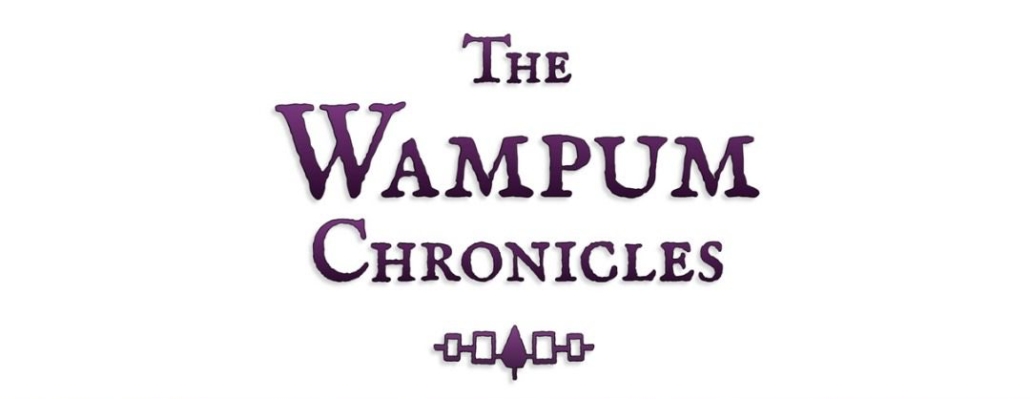
Land Where The Partridge Drums
A History of the Akwesasne Mohawk Nation
Enter Joseph Brant
by Darren Bonaparte

As previously mentioned, New York’s commissioners were empowered to extinguish any and all Indian claims to land within the boundaries of the state. Joseph Brant and John Deserontyon took advantage of the opportunity and entered negotations with New York on behalf of the Mohawks at Grand River and Bay of Quinte. Brant had been hired a few years earlier to help mediate troubles between the United States and the Indian Confederacies to the west, so New York was well aware that Brant was amenable to participating in a quitclaim similar to the Seven Nations of Canada treaty. He had, after all, been laboring to sell or lease Grand River land to white settlers, a development frowned upon by the British Crown. With a documented “power of attorney” from the chiefs at Grand River, Brant set out for Albany with his friend “Captain John.” By March 29,1797, they had agreed to
“cede and release to the people of the State of New York for ever all the rights or titles of the said nations to land within the said state.”
They were given $1,000 to divide among their two settlements, and an additional $600 for their own use. John Deserontyon, who wasn’t above skimming money from his own people, failed to disclose that he had been given $300 in addition to the $500 meant for his people and ended up dispersing only about $200 of their original $500. When a rival, Captain Isaac, learned of this, it caused a major split in the community and violence which claimed the life of Deserontyon’s brother-in-law and his son.
Cook Accuses Brant of Selling Off Land
Joseph Brant was not spared his share of controversy from the arrangement either. To his dismay, he soon learned that Colonel Louis Cook was spreading rumors among the Seven Nations of Canada that the land commissioners of New York had informed him in 1796 that Brant had sold off their land and pocketed the avails. This, of course, was before Brant and Deserontyon’s 1797 quitclaim. The sale in question was actually a 1788 compromise deed known as the “Phelps and Gorham Purchase” which was declared null and void, like the previously mentioned “Livingston Lease,” by the state legislature. Brant had witnessed the signatures of 66 chiefs, a fact he did not deny, but insisted that the land in question was nowhere near the territory claimed by the Seven Nations–it wasn’t even in Oneida territory. Brant’s witnessing of signatures did not necessarily imply that he was responsible for the contents of whatever it was that was being signed. Brant actually opposed these types of sales to the Americans and is quoted as having said in 1788:
“As for the Five Nations, most of them have sold themselves to the Devil–I mean to the Yankeys. Whatever they do after this is must be for the Yankeys—not for the Indians or the English.” (Wallace 1969: 167)
Disgusted with the eagerness of leaders to part with their lands to the dishonest American government and businessmen, Brant and the Grand River Haudenosaunee began to drift apart from their “American” counterparts at this point. As for the Seven Nations of Canada, Brant considered them ancient outcasts and denied that they had claim to the same territory as the Mohawks of Grand River and Bay of Quinte.
Brant demanded that the accusers present their evidence to the Grand Council at Buffalo Creek, but they insisted that he come to Kahnawake where the Seven Nations held their Grand Councils. He refused. He wrote letters to American government officials such as Thomas Morris, a member of the New York legislature, and Governors George Clinton and John Jay, asking them for information to help clear up the misunderstanding.
Unsatisfied with the responses, he sent his half-Indian assistant and nephew John Norton and a group of Cayuga chiefs to Albany in 1799 to procure copies of treaties and negotiation transcripts. They were met in Albany by a similar delegation from the Seven Nations, but the dispute was still left unresolved by the time the visit was concluded.
Later that year a Grand Council at Kahnawake was called. Even Sir John Johnson attended, so critical was peace between the two confederacies. Brant went with a support group of chiefs from a variety of tribes; he was determined to settle the matter once and for all.
Next week:The Seven Nations Grand Council of 1799
By Darren Bonaparte, historian and author of The Wampum Chronicles. Reprinted with permission.
Darren Bonaparte is a cultural historian from the Akwesasne First Nation. He is a frequent lecturer at schools, universities, museums, and historical sites in the United States and Canada. He has written four books, several articles, and the libretto for the McGill Chamber Orchestra’s Aboriginal Visions and Voices. Darren is a former chief of the Mohawk Council of Akwesasne. He is the creator of The Wampum Chronicles and historical advisor to film and television. He currently serves as the Director of the Tribal Historic Preservation Office of the Saint Regis Mohawk Tribe.














